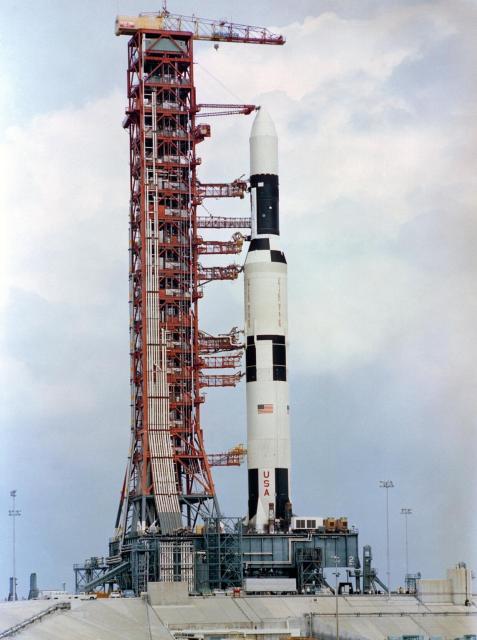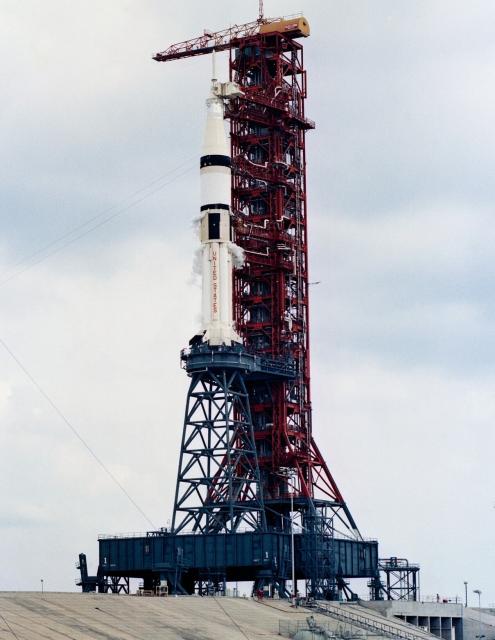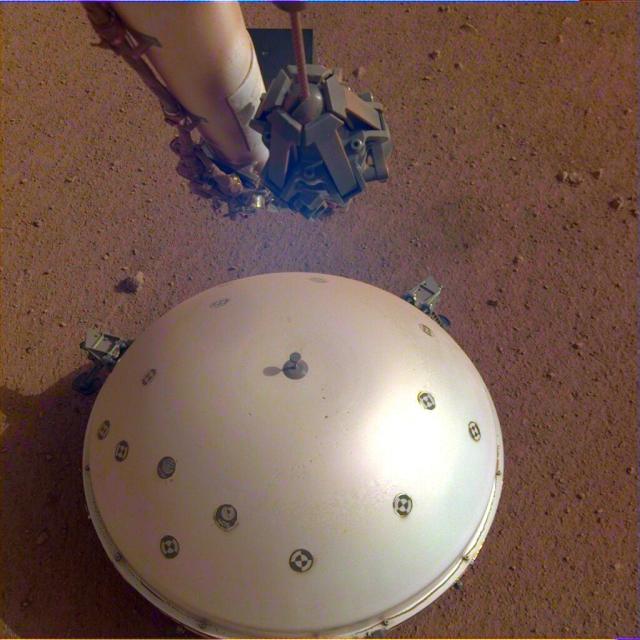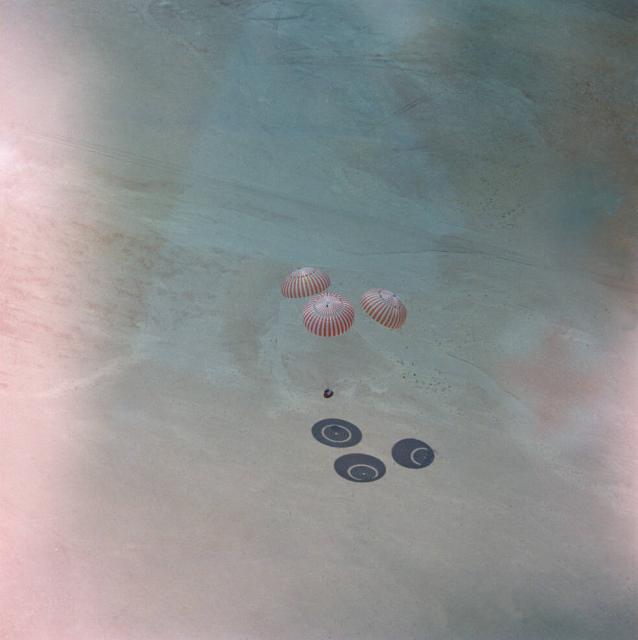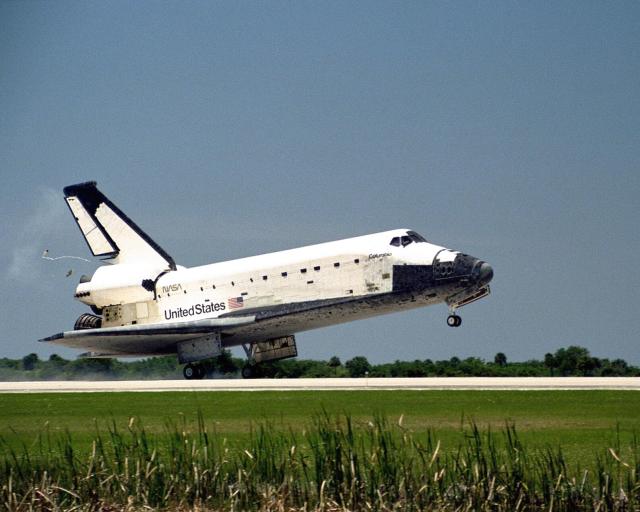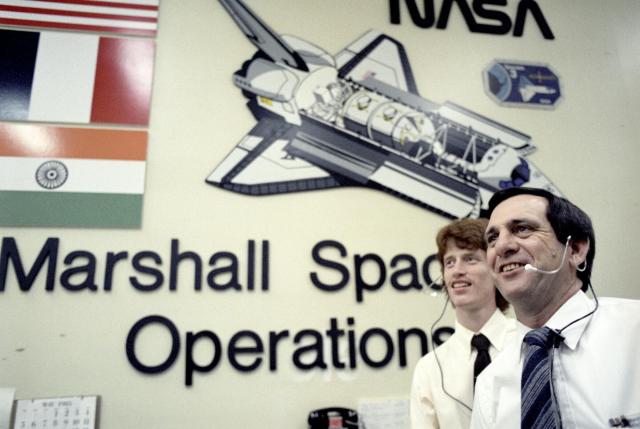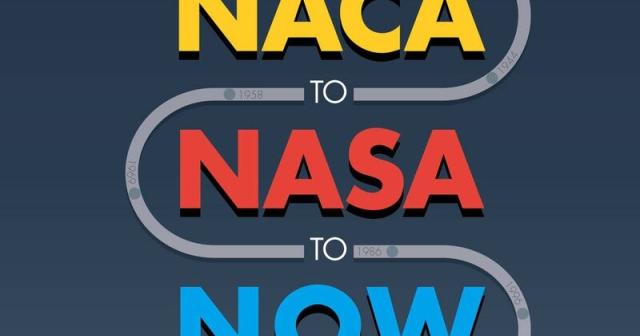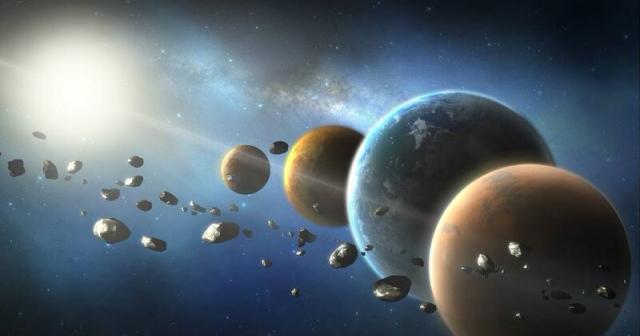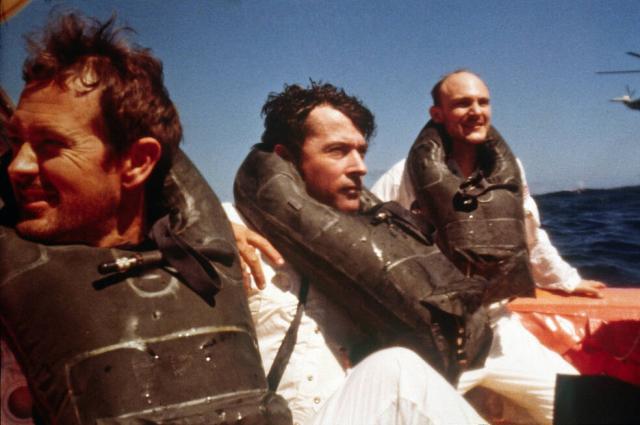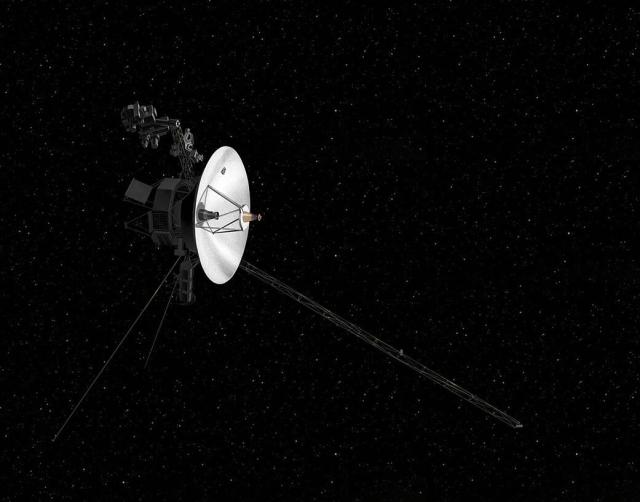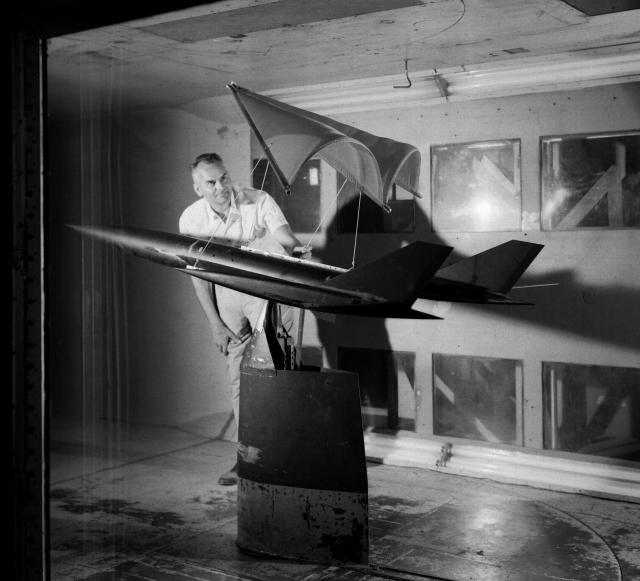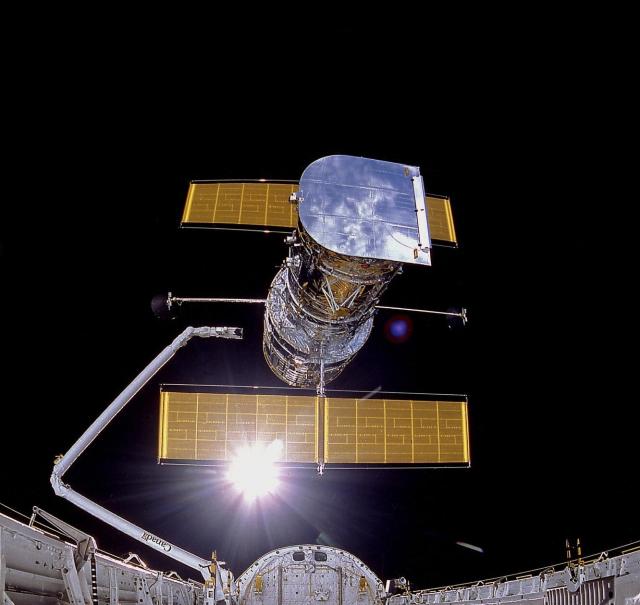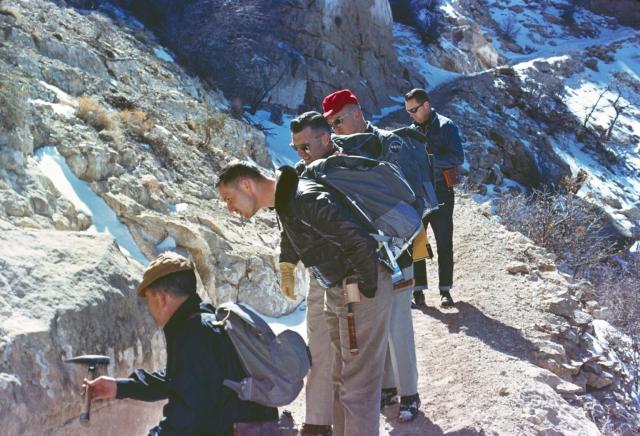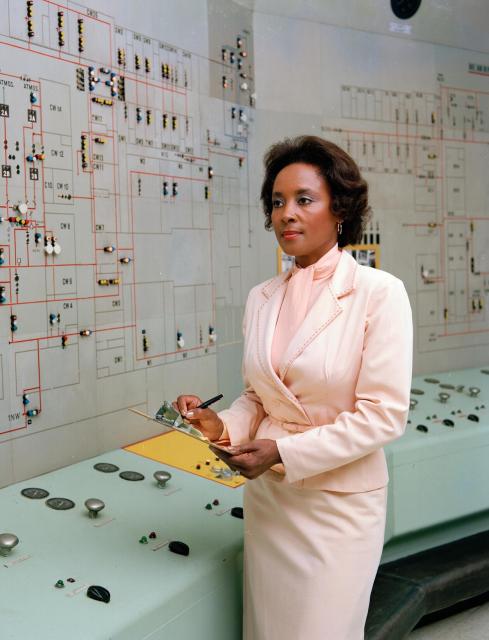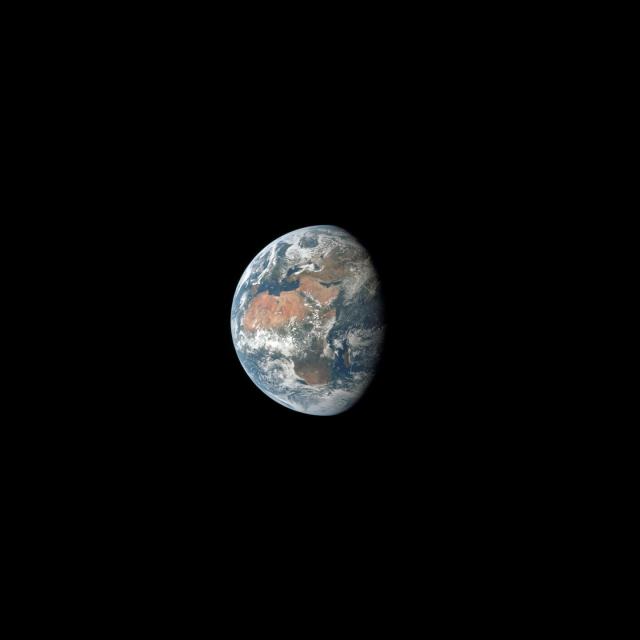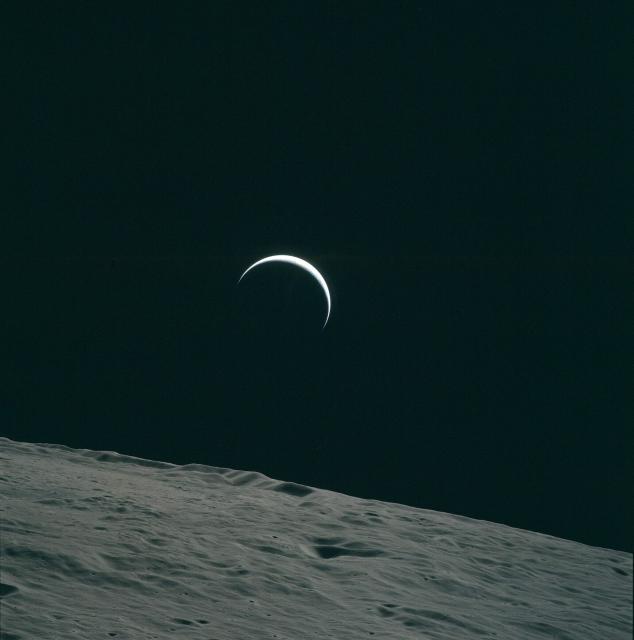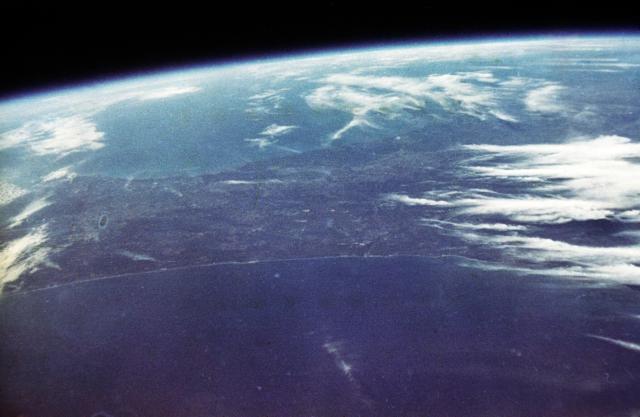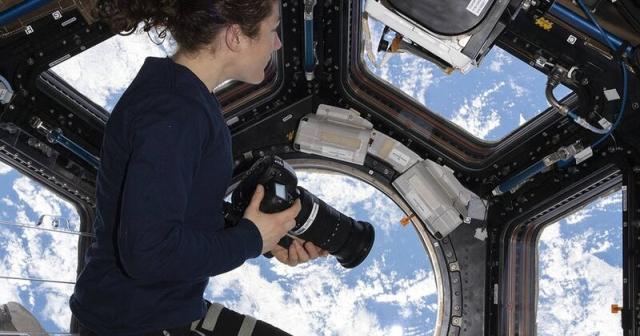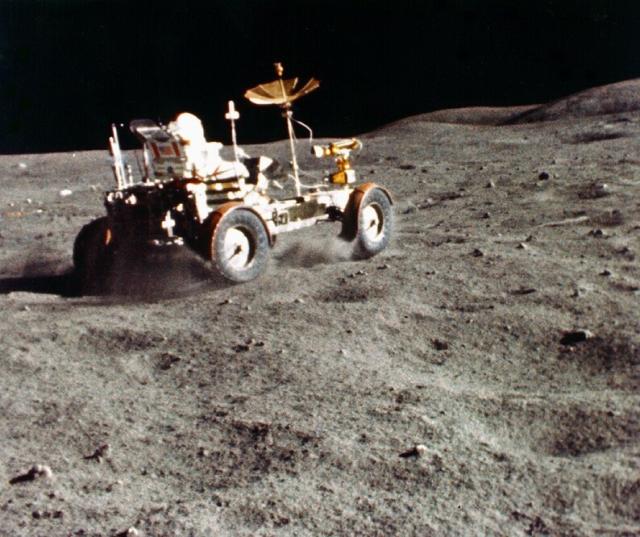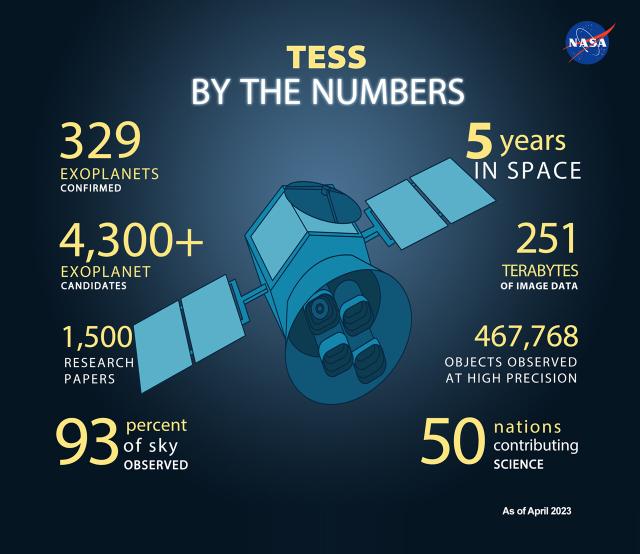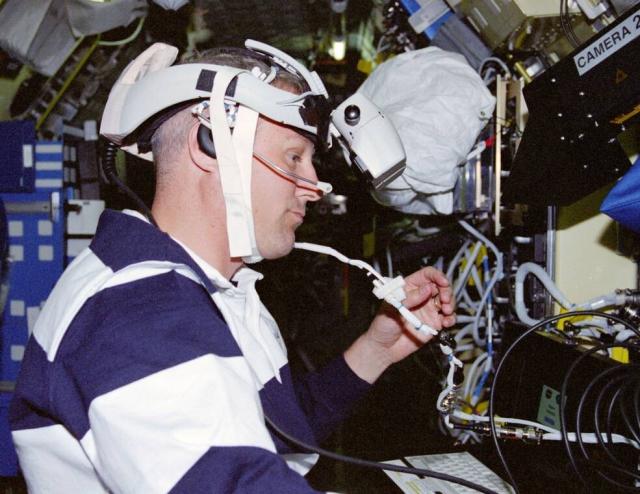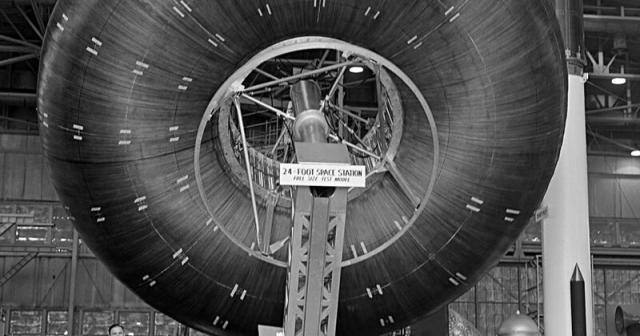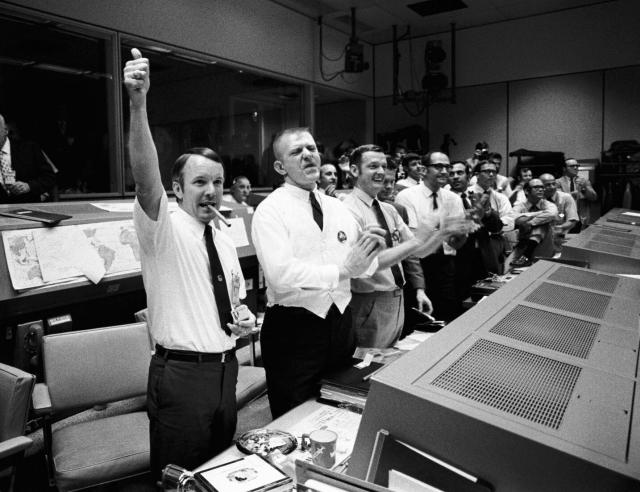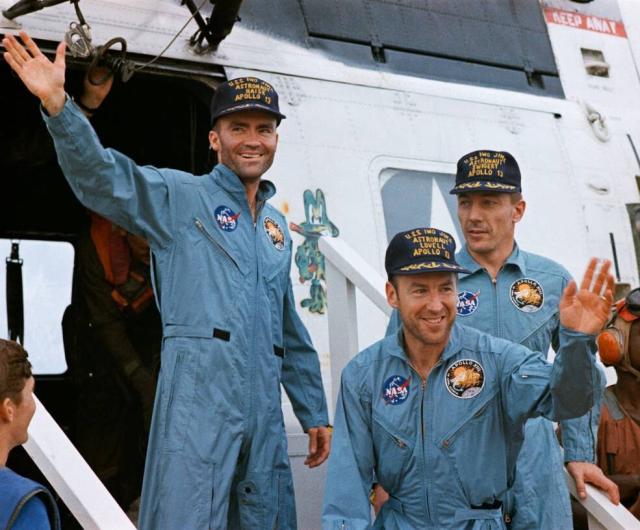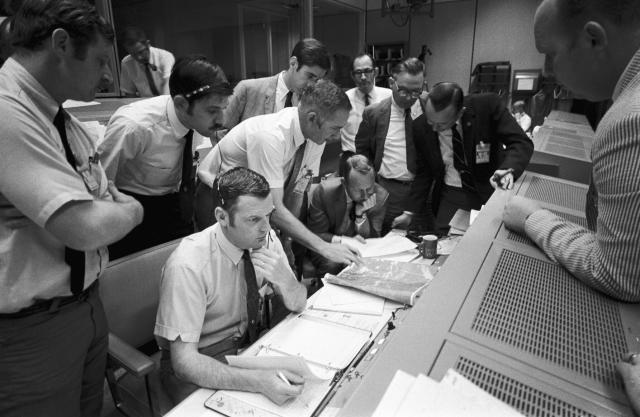Search
Items tagged with: NASAHistory
Fast forward to today ⏩
NASA's OSIRIS-REx spacecraft is on its way back to Earth and scheduled to drop off its sample from the asteroid Bennu on September 24! go.nasa.gov/44I6YPE
#NASAhistory
In Depth | OSIRIS-REx – NASA Solar System Exploration
NASA’s OSIRIS-REx is the first U.S. mission to collect a sample from an asteroid.NASA Solar System Exploration
Mars Global Surveyor captured this photo of the Earth and our Moon from Mars orbit #20YearsAgo today in 2003. It was the first image of Earth ever taken from another planet that shows our home as a planetary disk!
See more views of Earth from space: flickr.com/photos/nasacommons/…
#NASAhistory
#NASAhistory
#OTD in 1968, Astronaut Neil Armstrong takes the Lunar Landing Research Vehicle 1 (LLRV-1) for a training flight and is forced to eject right before it crashes in a fiery blaze!
More about this hair-raising episode 55 years ago today: go.nasa.gov/3LWJHCr
#NASAhistory
55 Years Ago: Astronaut Armstrong Survives LLRV Crash
On May 6, 1968, NASA astronaut Neil A. Armstrong took off on a simulated lunar landing mission in a Lunar Landing Research Vehicle (LLRV) at Houston’s Ellington Air Force Base (AFB).Kelli Mars (NASA)
Alan Shepard became the first American to venture into space #OTD in 1961! Squeezing into the tiny "Freedom 7" capsule, Shepard's 15-minute suborbital flight was just a few weeks after Yuri Gagarin's landmark trip to space.
Watch highlights of this day ▶️ go.nasa.gov/3AKgGDy
#NASAhistory
60 Years of Human Spaceflight: Launching The First American into Space
Sixty years ago, on May 5, 1961, NASA astronaut Alan Shepard Jr. launched on the Freedom 7 mission, powered by a Mercury-Redstone rocket to become the first ...YouTube
One year ago today the @NASAMars InSight mission recorded the largest quake ever detected on another planet! go.nasa.gov/3noY3Sn
See how InSight's seismological data have given scientists an unprecedented view of Mars' core: go.nasa.gov/44l3mmq
#NASAhistory
Lower your blast shield and stretch out with your feelings
Launched #OTD in 1976 (a year before we 1st witnessed Luke's lightsaber training), LAGEOS was a laser-ranging satellite able to measure small changes in the Earth. #StarWarsDay
go.nasa.gov/3AOjEXJ
#NASAhistory

Now 40, LAGEOS Set the Bar for Studies of Earth
Still going strong after 40 years in space, the LAGEOS satellite was NASA's first orbiter dedicated to precise laser measurements of Earth.NASA
Today we mark the 60th anniversary of the first test of the Apollo parachute system, a vital element in bringing the Apollo astronauts home safely after their flights to the Moon.
Read more: nasa.gov/feature/60-years-ago-…
#NASAhistory
60 Years Ago: Apollo Parachute Development and Testing
In 1961, President John F. Kennedy committed the United States to landing a man on the Moon and returning him safely to the Earth.Kelli Mars (NASA)
25 years ago #today at 12:08 pm EDT, Space Shuttle Columbia touched down at @NASAKennedy 's Shuttle Landing Facility to complete the nearly 16-day STS-90 mission.
Learn more about STS-90: go.nasa.gov/44lEsTO
#NASAhistory
25 Years Ago: The STS-90 Neurolab Mission
On April 17, 1998, space shuttle Columbia lifted off on the STS-90 Neurolab mission to conduct cutting edge research on the responses of the brain and central nervous system to spaceflight.Kelli Mars (NASA)
75 years ago today, Howard C. "Tick” Lilly was tragically killed in the line of duty when the Douglas D-558-I Skystreak he was piloting crashed on takeoff. He was just 31 years old. @NASAArmstrong
Learn more about Howard Lilly: go.nasa.gov/42bMWLA
#NASAhistory
Howard C. Lilly
NASA.gov brings you the latest images, videos and news from America's space agency. Get the latest updates on NASA missions, watch NASA TV live, and learn about our quest to reveal the unknown and benefit all humankind.NASA
#NASAhistory
65 years ago today, James Van Allen announced at a meeting of the National Academy of Sciences, the existence of radiation belts around the Earth.
These "Van Allen Belts," detected by Explorer I and III, were an unexpected scientific phenomenon: go.nasa.gov/3NykuQ3
#NASAhistory
Studying the Van Allen Belts 60 Years After America’s First Spacecraft
The U.S.' first satellite in space, launched Jan. 31, 1958, heralded the emergence of space physics and ushered in a new era of technology and communications. This satellite, Explorer 1, discovered Earth's Van Allen Belts.NASA
STS-51B launched #OTD in 1985, for the 2nd flight of the Spacelab module (Spacelab 3) carrying 15 primary microgravity experiments.
@NASAMarshall Space Flight Center had management responsibility for the Spacelab 3 mission. 📷 Marshall Spacelab Operations Control Center
#NASAhistory
A must-listen episode of Houston We Have a Podcast featuring former NASA Chief Historian Roger Launius!
Download his new e-book: nasa.gov/connect/ebooks/naca-t…
#NASAhistory
NACA to NASA to Now
NACA to NASA to Now: The Frontiers of Air and Space in the American Century tells the story of the National Advisory Committee for Aeronautics (NACA) and its successor, the National Aeronautics and Space Administration (NASA).Michele Ostovar (NASA)
Deadline extended to June 15!
We're seeking paper proposals for our upcoming symposium celebrating the NASA Discovery Program's 30 years of solar system science. Get details on the symposium and a list of topics👇 go.nasa.gov/3HbVDgz
#NASAhistory
Call for Papers for Discovery@30, New Frontiers@20 Symposium
The NASA History Office and the Smithsonian’s National Air and Space Museum invite proposals for papers to be presented at a two-day symposium in November 2023, in Washington, DC.Michele Ostovar (NASA)
Canadarm, meet Canadarm2 🤝
#OTD in 2001, the @Space_Station's newly installed Canadarm2 transferred its launch cradle to Space Shuttle Endeavour's Canadarm, performing a "handshake" in space. @csa_asc astronaut Chris Hadfield was at the STS-100 shuttle's Canadarm controls.
#NASAhistory
"Whew! That's what I call a thrill." –Apollo 16 astronaut Ken Mattingly
Travelling at more than 11,000 m/s (36,000 ft/s) as the Apollo 16 spacecraft entered the atmosphere, its heat shield reached 2200–2480°C (4000–4500°F) and the crew pulled 7 Gs before its parachutes deployed.
#NASAhistory
#NASAhistory
50 Years Ago: Apollo 16 Splashes Down
On April 27, 1972, Apollo 16 astronauts John W. Young, Thomas K. “Ken” Mattingly, and Charles M. Duke successfully ended their 11-day Moon landing mission with a splashdown in their Command Module (CM) Casper in the Pacific Ocean.Kelli Mars (NASA)
#NASAhistory
Across the country, Vernon's brother Francis Rogallo worked at @NASA_Langley and is best known for designing the Rogallo Wing, a flexible airfoil, with his wife Gertrude. The Rogallo Wing has been used for hang gliding, paragliding and stunt kite flying! 🪂
📷 Rogallo Wing, 1959
#NASAhistory
33 years later, Hubble continues to explore and inspire!
@NASAHubble was deployed by Space Shuttle Discovery #OTD in 1990, becoming one of the notable success stories in NASA's history!
Read about HST's early days in Chris Gainor's historical account: go.nasa.gov/3ovH3dq
#NASAhistory
Not Yet Imagined
Not Yet Imagined documents the history of the Hubble Space Telescope from its launch through its first 30 years of operation in space.Michele Ostovar (NASA)
#DYK the Apollo astronauts trained at American canyons, craters, and lava fields to prepare for their trips to the Moon? #NationalParkWeek
📷 Geologist Dr. E. Dale Jackson instructs astronauts Neil Armstrong, Dik Gordon and Donn Eisele at Grand Canyon National Park in 1964.
#NASAhistory
Annie Easley, born #OTD in 1933, began her career at the NACA as a “human computer,” performing complex calculations. When machines began to replace human computers, Easley adapted, becoming an expert computer programmer.
More on her years at @NASAglenn: go.nasa.gov/3A4L9fj
#NASAhistory
"Oddly enough the overriding sensation I got looking at the Earth was, My God that little thing is so fragile out there."
— Michael Collins, Apollo 11 astronaut
"That beautiful, warm, living object looked so fragile, so delicate, that if you touched it with a finger it would crumble and fall apart. Seeing this has to change a man."
— James B. Irwin, Apollo 15 astronaut
"Circling the Earth in my orbital spaceship, I marveled at the beauty of our planet. People of the world, let us safeguard and enhance this beauty, and not destroy it."
— Yuri Gagarin, Vostok 1 cosmonaut, first human in space
"Every single part of the Earth reacts with every other part. It’s one thing. … If I could get every Earthling to do one circle of the Earth, I think things would run a little differently."
— Karen Nyberg, STS-124, and Expedition 36/37 astronaut
#NASAhistory
Ep 107: The Overview Effect
Space philosopher and author Frank White discusses the impact of looking down at the Earth from above, and how it can create a shift in the way astronauts view and think about our planet and life itself. HWHAP Episode 107.Norah Moran (NASA)
Apollo 16 astronauts John Young and Charlie Duke landed on the Moon #OTD in 1972!
While on the lunar surface, they collected 212 pounds (96 kg) of lunar samples and ventured out 2.4 mi (3.8 km) from their landing spot with the help of the lunar rover. go.nasa.gov/41jJdLF
#NASAhistory
50 Years Ago: Apollo 16 on the Moon at Descartes
Apollo 16 entered lunar orbit on April 19, 1972. The next day, astronauts John W. Young and Charles M. Duke separated their Lunar Module (LM) Orion from Thomas K. “Ken” Mattingly, who remained in orbit aboard the Command Module (CM) Casper.Kelli Mars (NASA)
Since 1972, Landsat satellites have provided a continuous record of Earth’s surface from space, giving us an unparalleled baseline for understanding how the planet is changing. 🌏 #EarthMonth
50 years of @NASA_Landsat observations of Las Vegas. Irrigated vegetation appears red.
#NASAhistory
#NASAhistory
I think neuron to something! 🧠
25 years ago, the crew of STS-90 were kicking off the 16-day Neurolab mission to help us better understand the brain and central nervous system’s response to microgravity. nasa.gov/feature/25-years-ago-…
#NASAhistory
25 Years Ago: The STS-90 Neurolab Mission
On April 17, 1998, space shuttle Columbia lifted off on the STS-90 Neurolab mission to conduct cutting edge research on the responses of the brain and central nervous system to spaceflight.Kelli Mars (NASA)
These guesses are totally tubular!
If you're curious, it was indeed a concept for an inflatable space station. 🍩 nasa.gov/larc/five-decades-of-…
#NASAhistory
Five Decades of Space Station Research
Space station research has been a part of Langley Research Center's portfolio from its early NASA daysNASA
Home Safe and Sound
The exhausted Apollo 13 flight controllers, joined by astronauts, managers, and VIPs in the Mission Control Center in Houston, rejoiced in the safe splashdown of the Apollo 13 astronauts in the Pacific Ocean #OTD in 1970. go.nasa.gov/3UpaJVF
#NASAhistory
#NASAhistory
50 Years Ago: Apollo 16 Launches to the Moon
The fifth Moon landing mission began with the April 16, 1972 launch of Apollo 16. The giant Saturn V rocket lifted off from Launch Pad 39A at NASA’s Kennedy Space Center (KSC) in Florida...Kelli Mars (NASA)
In the early 1960s, NASA was investigating a new concept in space flight, a model of which is seen in this photo taken in 1961.
Tell us your guess of what it was! 🤔
#NASAhistory
#NASAhistory
The dawn of a new age in space flight!
The wheels of Space Shuttle Columbia, the first reusable spacecraft, touched down at Edwards Air Force Base after its first flight to space #OTD in 1981.
Bob Crippen's memories of this historic flight: go.nasa.gov/410vfya
#NASAhistory
STS-1: Astronaut Bob Crippen Remembers the Ride of His Life
STS-1: Astronaut Bob Crippen remembers the ride of his life.Linda Herridge (NASA)
"Houston, we've had a problem."
Jim Lovell spoke these words #OTD in 1970 following the rupture of a service module oxygen tank on the Apollo 13 spacecraft.
Watch the crew and mission control's recollections of the moment: go.nasa.gov/3MHhJuW
#NASAhistory
Apollo 13: ‘Houston, We’ve Had a Problem’
“Houston, we've had a problem” is the now famous phrase radioed from Apollo 13 to Mission Control upon the catastrophic explosion that dramatically changed t...YouTube
The first spaceflight of the Shuttle program 🚀
#OTD in 1981, Space Shuttle Columbia roared into orbit from @NASAKennedy for the first time carrying a crew of two: John Young and Robert Crippen.
More photos and history from STS-1: go.nasa.gov/3UvuWJh
#NASAhistory



